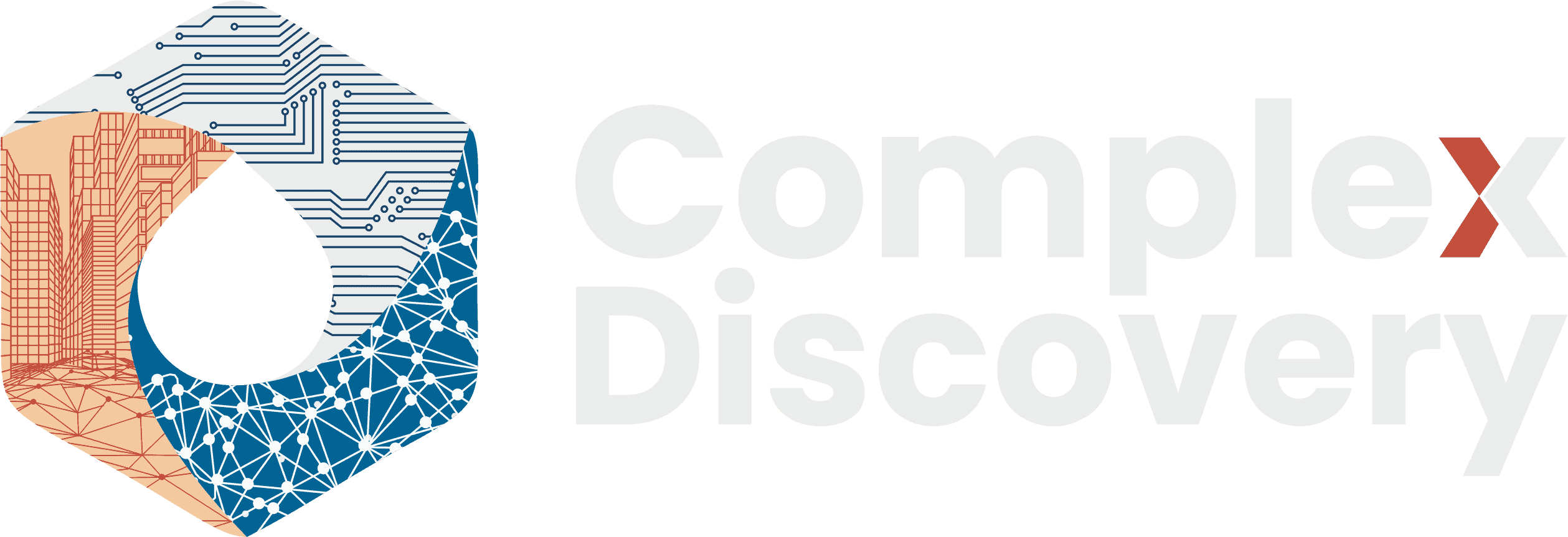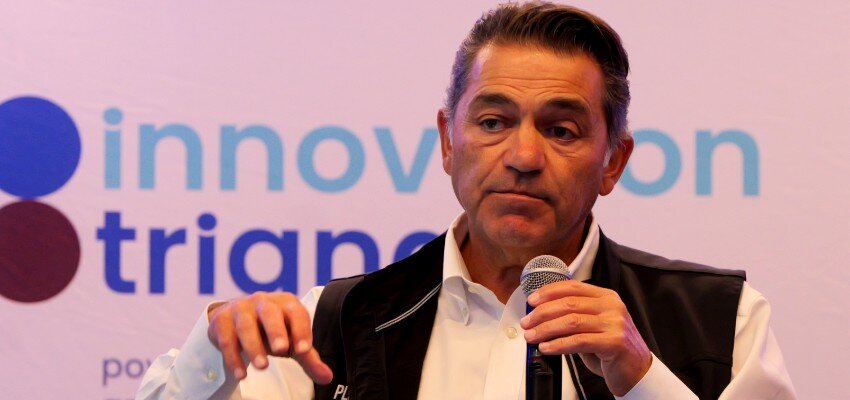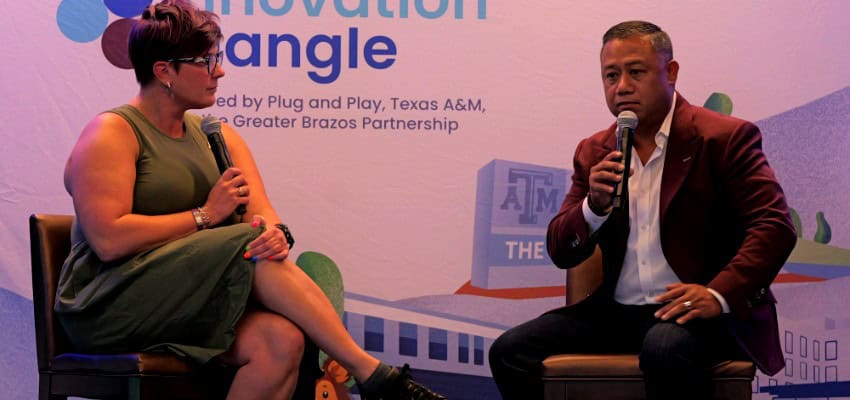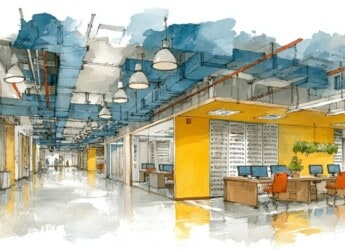Editor’s Note: Innovation takes flight where frontiers are embraced—and the Innovation Triangle’s Aerospace & Defense Accelerator showcase proves just that. Formed through the strategic collaboration of Texas A&M University, Plug and Play Tech Center, and the Greater Brazos Partnership, the Innovation Triangle marked a key milestone with the debut of its first accelerator cohort—uniting academia, industry, and public-sector leadership to accelerate dual-use technology innovation.
The intersection of aerospace, defense, and emerging technology holds direct relevance for professionals in cybersecurity, information governance, and eDiscovery—fields increasingly shaped by innovations in secure infrastructure, AI-enabled systems, and national security priorities. ComplexDiscovery continues to explore these developments with upcoming coverage of the Tallinn Digital Summit (October 2025) and Slush (November 2025)—two events advancing global digital and defense innovation.
What’s unfolding in Bryan-College Station isn’t just local momentum—it’s a rising launchpad for national and international impact. With expanding military partnerships, a world-class university ecosystem, and a globally connected accelerator platform, the Innovation Triangle is fast becoming a critical node at the edge of what’s next.
Content Assessment: Innovation Triangle Showcases First Defense Accelerator Cohort with a Vision for the Frontier
Information - 93%
Insight - 92%
Relevance - 92%
Objectivity - 94%
Authority - 95%
93%
Excellent
A short percentage-based assessment of the qualitative benefit expressed as a percentage of positive reception of the recent article from ComplexDiscovery OÜ titled, "Innovation Triangle Showcases First Aerospace and Defense Accelerator Cohort with a Vision for the Frontier."
Industry News – Technology Beat
Innovation Triangle Showcases First Aerospace and Defense Accelerator Cohort with a Vision for the Frontier
ComplexDiscovery Staff
The Innovation Triangle partnership—uniting Texas A&M University, Plug and Play Tech Center, and the Greater Brazos Partnership—celebrated a defining moment for regional innovation with the inaugural cohort showcase of their Aerospace & Defense Accelerator. This milestone event highlighted the collaboration’s deep commitment to shaping the future of defense technology, entrepreneurship, and cross-sector collaboration.
Program Overview: Laying the Foundation for an Innovation Ecosystem
Hosted at Texas A&M’s College Station campus on September 16, the event brought together senior university leaders, city officials, entrepreneurs, government partners, and technology investors. The gathering marked the launch of the first “batch” of startups advancing through the accelerator, underscoring the region’s ambition to anchor itself as a national hub for aerospace and defense innovation.
Welcoming remarks by program leaders emphasized both the entrepreneurial spirit that defines the program and the uniquely collaborative foundation—public, private, and academic—on which the Innovation Triangle rests. Plug and Play CEO Saeed Amidi commented, “We are going to double down in this location and build an ecosystem where the best ideas take flight. This is just the beginning, and our commitment includes launching substantial funding resources and growing a true center of excellence here.” The Texas A&M community’s world-class research assets and longstanding military traditions were on full display, with faculty, students, and alumni represented alongside defense industry giants and federal innovation leaders.
Community Leaders and Strategic Partners Unite Behind Innovation
The September 16 event showcased the breadth of stakeholder commitment behind the Innovation Triangle. Texas A&M Vice Chancellor for Research Dr. Joe Elabd highlighted the university’s formidable assets, noting its $1.4 billion in annual research expenditures, 25,000 engineering students, and unique testing facilities spanning 3,200 acres at the RELLIS Campus. “We’re not just thinking about where you incubate or accelerate your technology—we really are thinking about how you deploy your technology,” Elabd emphasized.
Greater Brazos Partnership Interim President & CEO Salman Khan reinforced the region’s strategic advantages, including proximity to five of the twelve largest cities in the United States and access to over 20 million people within a three-hour drive. “Not enough people know about Bryan-College Station,” Khan noted. “We have a great community here with lots of talent, lots of testing facilities, just a great location”.
Both mayors—John Nichols of College Station and Bobby Gutierrez of Bryan—welcomed the partnership as a catalyst for high-value job creation and economic development. Mayor Gutierrez, who was departing for Mexico City to speak with the Secretary of Economic Development about international business partnerships, emphasized the region’s entrepreneurial spirit: “We work at the speed of business, not the speed of government”.
A particularly significant dialogue featured Julia McAdams, Director of Industry Engagement for Army Futures Command, and Ross Guieb, Executive Director of the Bush Combat Development Complex. McAdams announced that the Army is expanding its Texas presence with the new Training and Transformation Command (T2C), which will grow from 35,000 to 350,000 personnel. “The Army has said this is a big place for us and it matters a lot to us twice,” she declared, underscoring the military’s long-term commitment to Texas as a center for defense innovation.
Keynote Highlight: Jim Cantrell on Why Frontiers Matter
A highlight of the day—and a source of inspiration for both technologists and entrepreneurs—was a keynote address by Jim Cantrell, one of the founding team members of SpaceX and founder of Phantom Space. Cantrell framed his talk around the essential role of “frontiers” in both technological and human progress.
Drawing from his experience “at the edge” of the commercial space revolution, Cantrell recounted the early skepticism faced by SpaceX and the relentless drive among those willing to “do stuff” in the face of conventional resistance. “Space is the next frontier—just as the American West was centuries ago, and as new worlds beckoned explorers throughout history,” he declared.
Cantrell invoked historical voices such as Carl Sagan to emphasize that the vitality of a nation, and even of humanity, is intertwined with its willingness to continually challenge boundaries: “Frontiers aren’t just geographic—they’re technological, intellectual, and spiritual. The act of reaching for what’s over the next hill, of asking ‘what’s possible if…,’ is what keeps societies alive and dynamic.” He described how, just as water seeks new channels, innovation surges when people break free of constraints and dare to build the future.
He detailed the transformation from “Space 1.0″—defined by nation-state endeavors—to the present “Space 3.0” digital space economy, shaped by startups and new business models. Cantrell credited this spirit of frontier-seeking with enabling audacious achievements: “Whether it was private space launch, or the creation of reusable rockets at SpaceX, every leap forward started with challenging not just the technology, but the prevailing mindset… and enduring the ridicule that often follows pioneers.”
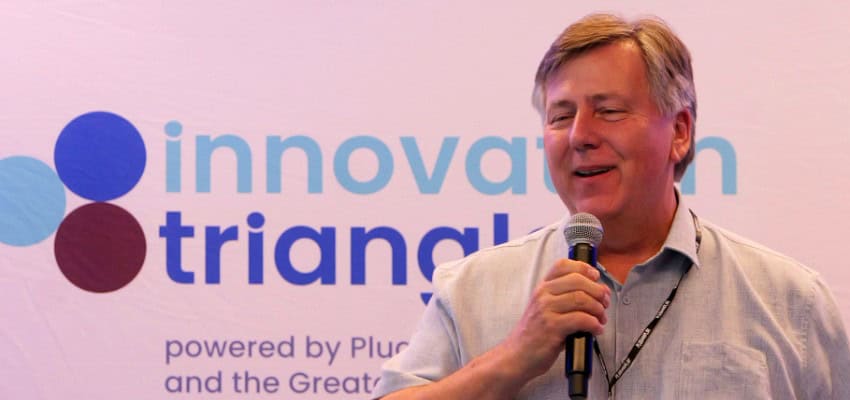
The Importance of Frontiers in Innovation
Cantrell’s keynote offered powerful lessons for those gathered at the Innovation Triangle. He explained that:
- Frontiers Drive Societal Renewal: Societies that continually seek and cultivate new frontiers foster imagination, risk-taking, and adaptability—traits that lead to revolutions, not just incremental progress.
- Technological Boundaries Fuel Economic Growth: Just as the American industrial revolution transformed everyday life, today’s space and defense frontiers promise not only new products and services but entirely new industries and economies.
- Cultural Resilience is Born at the Edge: Innovators face skepticism, resource constraints, and unforeseen obstacles. Surviving and thriving beyond the “frontier” requires a community—like that now forming in Bryan-College Station—with the resilience to support ambitious visionaries.
As Cantrell stated, “Space is not merely about rockets or satellites—it’s a symbol of what happens when societies, companies, and individuals dare to reach far beyond the current horizon. That’s why what you’re building here matters, not just for Texas, but for the country and the world.”
Looking Forward: A New Nexus for Aerospace & Defense
The September 16 event crystallized the Innovation Triangle’s ambition: to be more than just an accelerator, but a permanent front line for discovery, commercialization, and defense modernization. With Plug and Play’s global network and a competitive pipeline of startups, the partnership stands poised to define the next chapter in American aerospace leadership.
As authorities, entrepreneurs, and veterans exited the showcase, the message was clear: innovation flourishes wherever new frontiers are embraced. With industry, government, and academia now united at the edge of what’s possible, the Innovation Triangle is well on its way to establishing those frontiers—and inspiring generations to come.
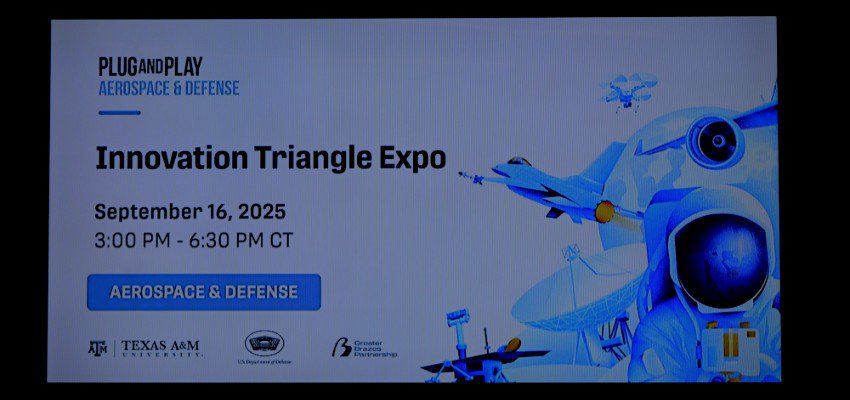
News Sources
- Robinson, Rob. “Innovation Triangle Showcases First Defense Accelerator Cohort with a Vision for the Frontier.” ComplexDiscovery, 16 Sept. 2025.
- Plug and Play Bryan-College Station
Assisted by GAI and LLM Technologies
Additional Reading
- Tallinn Digital Summit 2025 to Focus on Secure AI Futures, Cyber Resilience, and Digital Transformation
- Tallinn Digital Summit 2024: Charting a Secure Digital Future Amid Geopolitical Shifts
- Tallinn Digital Summit 2024 to Focus on Securing the Digital Tomorrow
- OECD Releases Digital Economy Outlook 2024, Volume 2, at Tallinn Digital Summit
- From Moscow to Pyongyang: Cyber Threats Revealed by Sandra Joyce at the Tallinn Digital Summit
- Tallinn Digital Summit Panel Explores DefenceTech’s Future in AI, Cybersecurity, and Ethics
- From Generative AI to Zero Trust: Cybersecurity Discussed by Microsoft’s Greg Wilson at the Tallinn Digital Summit
Source: ComplexDiscovery OÜ

